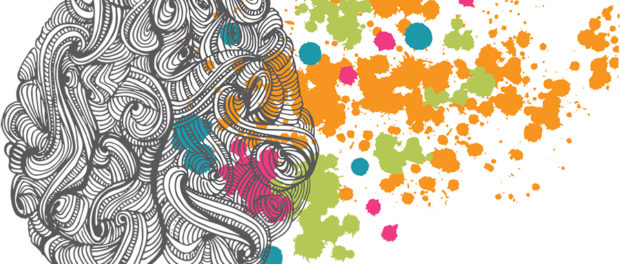Lifetime of a Brain

The human brain weighs a little more than three pounds and makes up about two percent of a human’s body weight. It contains more than 80 billion nerve cells and billions of nerve fibers connected by trillions of synapses. It interprets every piece of information humans receive from the outside world. It embodies the essence of mind and soul.
This master organ has countless mysteries, many of which are still undiscovered. Faculty in the Cognitive & Developmental Science area of the Department of Psychology, however, are working to unlock a few of these mysteries in order to gain a better understanding of how humans change over the course of a lifetime.
Developmental psychology is the study of how and why human feeling, thinking, and behavior changes throughout life. Originally concerned with infants and children, the field now includes the entire lifespan – from infant to aging.
In the Department of Psychology, faculty interests focus more specifically on understanding the early development of action, perception, cognition, and language. Each area of research will enhance the current body of knowledge of developmental processes. The interdisciplinary approach to research provides opportunities for faculty and graduate students to learn a variety of methodologies and theoretical approaches used in the field.
Aaron Buss
Executive function is a set of skills that allow people to engage in goal-oriented behavior. Aaron Buss, assistant professor of psychology, aims to explain how neural activity gives rise to this behavior. Specifically, he examines how executive function develops in early childhood, the dynamics of it in young adulthood, and its decline in elderly adults.
“These skills are important for everyday behavior,” Buss says. “Measures of executive function during early childhood are predictive of academic achievement later in childhood and quality of life outcomes into adulthood. Declines in executive function in aging are associated with a wide array of outcomes like injury and car accidents.”
Understanding the mechanisms associated with the structure and organization of behavior will allow Buss and his team to develop interventions to improve development in children and the declines in behavior associated with aging.
Shannon Ross-Sheehy
Young infants learn everything about the world through their senses, which supports cognitive development across a person’s life span. Shannon Ross-Sheehy, assistant professor of psychology, focuses on identifying and understanding the components of this early learning in young infants such as attention, working memory, and perception.
“My hope is that this work will allow us to identify the key attentional skills that support typical cognitive development and one day detect infants most at risk for cognitive deficits,” Ross-Sheehy says. “Our goal is to better support this critical early learning both in typical and atypical developing infants.”
Her work provides support for her UT colleagues engaged in other research focused on language, executive function, and education.
Greg Reynolds
Cognitive development during an infant’s first year of life includes major gains in visual attention, learning, and memory. Greg Reynolds, associate professor of psychology, examines the early development of attention and the impact of developmental change in attention on categorization, perceptual preferences, and recognition memory.
“Categorization is critically important for making sense of the world in an efficient and functional manner,” Reynolds says. “Infants demonstrate increasing specificity in their ability to categorize across the first year after birth. Discovering how human infants develop the ability to categorize is important for advancing scientific knowledge regarding early cognitive development.”
Using computational modeling of EEG, Reynolds aims to determine the areas of the brain involved in infant categorization in order to understand the effects of learning conditions on infant categorization, specifically of faces and objects.
Originally published in Higher Ground, April 9, 2018.



Leave a comment